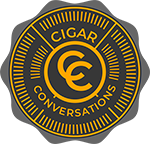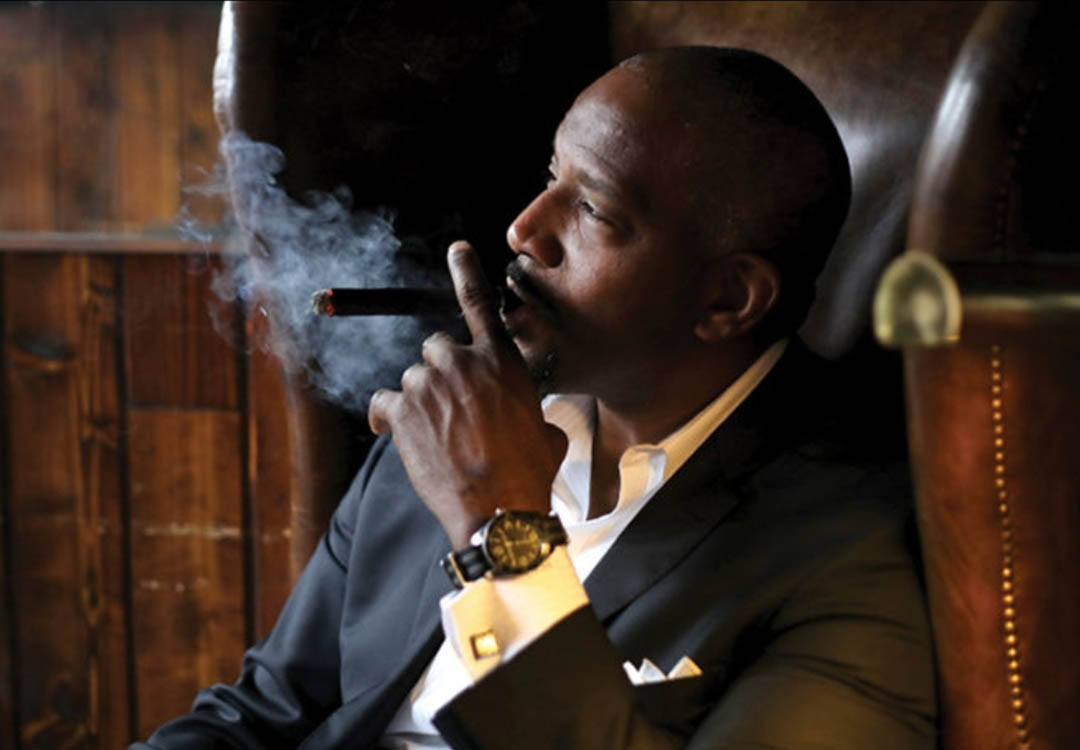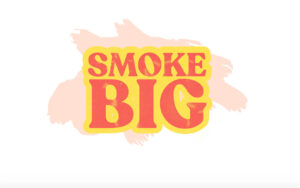Video Transcript
Seãn Johnson (00:29):
Hey everybody, this is Seãn Johnson with Cigar Conversations and I’m bringing you another quick puff with Cohiba and every time you say Cohiba, what is it synonymous with? The man, the myth, the legend.
Sean Williams (00:41):
Oh man, no pressure.
Seãn Johnson (00:44):
Oh, this the easy thing for you, man. I’m always getting on you for being in Aspen, being in Dubai and all of that. Every time I see you, you are… There’s cognac and the… Oh, you blushing, man? You blushing, man?
Sean Williams (00:58):
Come on, man.
Seãn Johnson (01:03):
But anyway, we’re here today because, one, I like to smoke, you like to smoke and this dropped last week. Okay. So it’s the Serie M. Tell me about this.
Sean Williams (01:20):
Well, Cohiba Serie M is first Cohiba ever made in the USA. Made in Miami, thus Serie M and also the band sort of denotes knows Miami USA. This just sort of, really, really different sort of out-of-the-box approach to a project that we’ve done, as far as Cohiba, first off, making the USA is obviously the first time ever been done. We’re making it in a really small, family-owned, really, really just super personal factory with the El Titan de Bronze factory that I’m familiar with, almost like family to me, having made cigarettes with them years ago and over a number of years. So it’s just really, really, really cool to bring such a juggernaut, such a big brand like Chiba and make it in such a… Just sort of a small family, intimate operation like Titan de Bronze.
Seãn Johnson (02:24):
But when you say, “Made in Miami,” we’re talking about the farms in South Dade Miami or the leaves are… tell me-
Sean Williams (02:35):
Yeah, no, no, no, no. So, the cigar’s made in Miami, Calle Ocho in Little Havana.
Seãn Johnson (02:39):
There you go.
Sean Williams (02:41):
The breakdown, the wrapper is Ecuador, Corojo. Binder is Nicaragua in Esteli and then the filler, you have some more Esteli, some Jlapa, which is Jlapa Valley, Nicaragua and Piloto Cubano. So…
Seãn Johnson (02:55):
Okay.
Sean Williams (02:56):
Primarily Nicaraguan in its make-up with a little bit of a Dominican Piloto Cubano splashed into the filler. So, yeah.
Seãn Johnson (03:05):
How many different faces Chiba have one of their profile? Because you guys come up with a new one almost every year which is very challenging.
Sean Williams (03:16):
Yeah, it is challenging but what we do is a little different. As far as facings, I mean, if I just kind of run down the list, the Red Dot, which is the godfather. That’s this boy here, the original Cameroon blend. That’s the cornerstone of everything, honestly. So you got the Red Dot, you got the Chiba Black which is a beautiful Connecticut Broadleaf wrapper grown in the Connecticut River Valley in the USA. You have the Chiba Connecticut which is the one in a white box. You have the Chiba Nicaragua. You have the Chiba Macassar. You have the Chiba Royale. You have the Chiba Blue. So those are seven sort of regular production cigars.
Seãn Johnson (04:01):
Okay. Okay.
Sean Williams (04:01):
But we draft a Spectre each year which we’ve done for the last few years for that special one-and-done release.
Seãn Johnson (04:06):
Correct.
Sean Williams (04:06):
And this is a one drop that we’re going to do with Chiba Serie M this year. We also do Spectre later in the year. So we sprinkle in these really limited, super limited, production projects but as far as the core, consistently, regular-produced stuff, I mean, seven different lines within an entire range.
Seãn Johnson (04:32):
Okay. Okay.
Sean Williams (04:33):
So it’s not super heavy but we want to make sure we got everything covered, man. Not everything but we want to make sure that we have a good variety and a good breadth to offer to the cigar audience, right? So with the Red Dot, you got the original, authentic Cameroon out of the Congo, Republic of Africa. So that’s something very, very distinctive in its profile. With the Black, as a test on Connecticut Broadleaf, which is like an OG Maduro.
Seãn Johnson (04:58):
Right, right.
Sean Williams (05:00):
And, again, representative of the best tobacco that we grow here in the USA. With the Chiba Nicaragua, that was the first Chiba to be made in Nicaragua So it really speaks to that profile within an oscuro wrapper, all Nicaraguan binder and filler. The Chiba Blue is really representative of Honduras, has the Olancho sign of esteem wrapper and binder. Also has Honduran Valley tobacco in the filler. So it kind of speaks to the Honduran profile. You talked about the Chiba Connecticut, has Ecuadorian-grown, Los Rios region grown wrapper from Ecuador. So it kind of speaks to that profile. Then with the Royale it’s more heavy, heavy Nicaraguan. Well-balanced but the fullest of the cigars.
Seãn Johnson (05:45):
Yeah, I love that black one.
Sean Williams (05:47):
Jlapa Valley, Nicaraguan wrapper.
Sean Williams (05:48):
So we want to make sure that we have something. If you seek out a Chiba, there should be something that sort of speaks to your palette within a profile. And now with the addition of the Serie M we now have an Ecuador and Corojo, which we didn’t have a Corojo at all in the portfolio, so-
Seãn Johnson (06:04):
Oh, really?
Sean Williams (06:05):
Yeah.
Seãn Johnson (06:06):
Okay. You see, that part I didn’t know because as much as I’m… The Blue Dot, Red Dot, those I love. The Spectre, phenomenal, phenomenal.
Sean Williams (06:28):
But that’s a unicorn, right? With literally a couple of thousand cigars, it was a made. So…
Seãn Johnson (06:34):
That was going to be my next question. Since what has rolled out that has actually surprised you? Because you guys put out, obviously, to please the audience, but it has taken on a life of its own. What has actually just blown you guys out of the water as far as, “Damn, I can’t believe we did that.”
Sean Williams (06:56):
I don’t know. Maybe a couple of different things for different reasons. You’d have to say Spectre and the first release of Spectre we did was 2018 and a lot of things about that was ambitious because, conversely, the cigar that was released prior to that in 2017, in Spring of 2017, was Chiba Blue which is really sort of the entry-level vehicle for Chiba. It’s the one that’s sort of more budget-friendly for lack of a better term. And then to come out with Spectre a year and a half later, which is literally the most expensive cigar that General Cigar as a company’s ever put out, let alone go Chiba. That was a risk, right? So-
Seãn Johnson (07:45):
Right.
Sean Williams (07:46):
But it was a risk worth taking. When we sit down and we start planning it out and say, “Hey, you go get the factory and you guys just make whatever cigar you want to make. Just make it special. Make it good. And we don’t care about the cost.” Right? So that’s a blank canvas.
Seãn Johnson (08:06):
Yes.
Sean Williams (08:07):
So going into it, you know that you can kind of swing for the fences but you don’t know if it’s going to be a home run, right? But it turned out that it was. It was a fun cigar to work on in a lot of respects and the market really responded to it and we learned a lot about the brand support for Chiba which really was encouraging for us. It gave us the latitude to really, really try new things to bring to the Chiba audience which they responded to over the last few years. So it’s been great, man. It’s been great.
Seãn Johnson (08:48):
One thing I know, the Spectre, you guys have definitely raised the bar. So now do you think it makes it harder for you guys to go ahead and say, “Okay, each year we’re going to have to push the bar.” I think with 2019, with the Spectre, it catapults you guys at least two years for what you guys have done as far as what the next one’s going to be. So now how do you feel?
Sean Williams (09:18):
Yeah, so 2019, of the two releases, was my favorite for a couple of reasons. The size was more in line with what I really liked. The first Spectre was a 7×54, a larger platform than I’d normally smoke. But there was a reason it was that size. Conversely, 2019 was a 6×49, which is more in line with the traditional Toro.
Seãn Johnson (09:46):
Right.
Sean Williams (09:46):
Sort of performed a little bit fuller, a little bit more up-front spice, like that a lot. But we didn’t release one in 2020 because 2020.
Seãn Johnson (10:02):
We’re in 2021 but technically I think we’re going to work for a while one year behind. So this is 2020 here. Because, Jesus, nothing happened in 2020.
Sean Williams (10:11):
Yeah, I mean, well, we released Chiba Royale in 2020. It killed it, man. And that was a pleasant surprise and it’s one of the things that I don’t know that we’d even do anything differently now, knowing we know because the cake was already baked, the cigar was literally coming out in March and April and, of course, pandemic hits in March.
Seãn Johnson (10:31):
Right. Y.
Sean Williams (10:32):
But we’re like, “You know what, it’s all ready to go so let’s just put it out there.” And I’m glad we did because the cigar market really started to pick up in early summer and Royale was sort of already out there in the marketplace and it did very, very well last year. So you never really know how things are going to going to go. But as it relates to Spectre, we’re coming out with a Spectre this year and this would be the last release, for a while at least, because with Spectre it’s not about trying-
Seãn Johnson (11:00):
Keep rolling out new stuff. No.
Sean Williams (11:02):
Yeah and it’s not trying to outdo the previous one. Spectre is really a result of certain tobaccos that we have available that we don’t anticipate having available going forward. So it’s about using special material. So if you don’t have the requisite special material to warrant making a cigar of that status then you don’t do it. So, luckily we had some good stuff that we’re working with for this release and maybe some stuff will develop as far as some tobaccos that we have within our ecosystem that I’m not aware of, but there’s nothing right now that I’m inspired to say, “Okay, let’s make this work,” because Spectre, for what it is, it’s a pretty big undertaking to release a cigar that you only going to have a few hundred boxes of because you still got to make the packaging and the design behind it and it’s very, very expensive. And the smaller volume you do, as far as the packaging, the more expensive it is.
Seãn Johnson (12:03):
If you guys haven’t seen the box, believe me, it’s gorgeous. As a matter of fact, this is what the box look like. Hold on. I’m going to show you. Right here, not only do they have the box, as you see, they also have… It comes with a card. Okay. It’s a black card, a Chiba black card. Okay.
Sean Williams (12:26):
It’s just a-
Seãn Johnson (12:26):
It’s just what?
Sean Williams (12:28):
It’s an authenticity.
Seãn Johnson (12:31):
So there you go. That’s what it looks like. And it tastes just as good as the packaging looks. You hear me? It tastes just as good as the packaging looks. Now, every year you guys would roll out and do the unveiling of sorts at the trade show. How are you guys this year? Are you guys going to be there this year?
Sean Williams (12:56):
No, we won’t be at the show this year. We will have a presence at TPE, Tobacco Plus, which is… That’s happening. That’s happening in a few weeks actually. So we will be out there. I won’t personally, or any personalities, but as a company we will have representation out there.
Seãn Johnson (13:16):
Right.
Sean Williams (13:17):
But specifically the show you’re talking of, PCA, yeah, we’re not participating this year so I won’t be there. Yeah, which is not necessarily a bad thing as it relates to Spectre because, even with that, it’s sort of unveiled in that people see it. Very few people get a few samples of it but the cigar doesn’t really ship until the fall anyway. So it gives us just kind of more time to make sure we button up the packaging, make sure everything is solid and ready to go before we start shipping it out in the summer. So… I mean, in the fall.
Seãn Johnson (13:50):
In the fall. Okay.
Sean Williams (13:51):
Yeah, yeah. So…
Seãn Johnson (13:52):
Now is this the Serie M? Are we looking at a limited run? What we looking at?
Sean Williams (14:02):
5000 boxes. Ten count boxes, 5000 available this year and we anticipating doing it again next year and it’s got to be sort of the same sort of premise. And that’s just really as a result of Titan de Bronze being a smaller operation. I don’t know if you’ve had a chance to go down there but it’s a very, very, very limited production capability. So we had to figure out, okay, how can we stage this production? And then it’s not just producing the cigars. It’s also the packaging there, which if you ever go to the factory, you’ll see. It’s just a lot. And when these boxes, which we make the boxes at our factory in Honduras. Shout out to [inaudible 00:14:45]. When they come in just the packaging alone, the pallets to get the boxes and to physically pack up the cigars and… It’s a a very, very arduous…
Seãn Johnson (14:55):
Thank you for watching another episode by Cigar Conversations. For more information or to comment on previous shows, visit us at cigarconversations.com.




